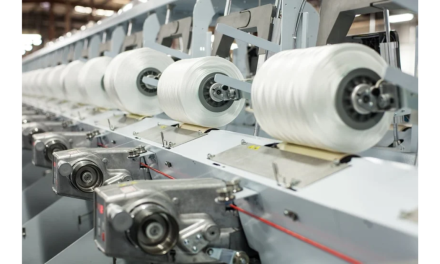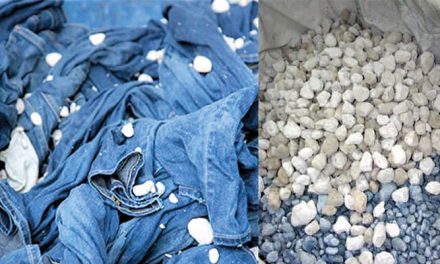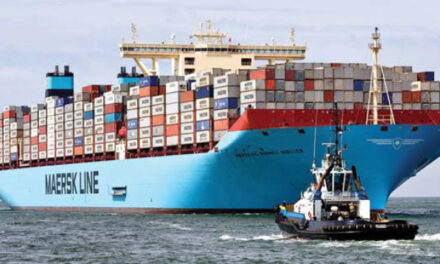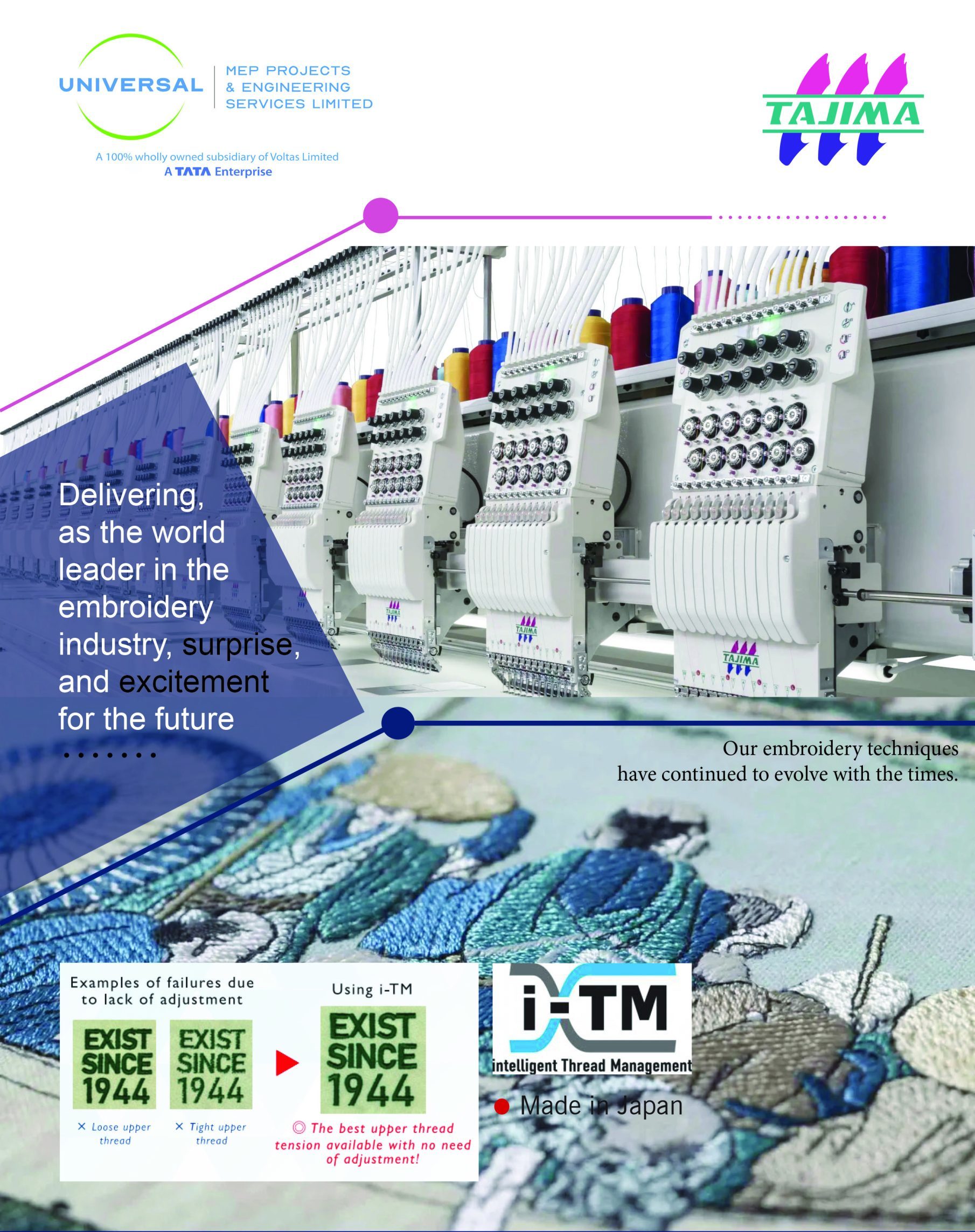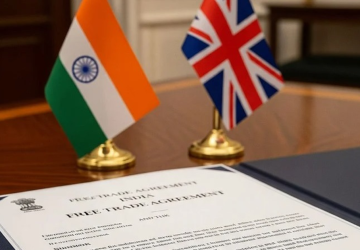India’s policy on Free Trade Agreements (FTA) is getting clear during the on-going negotiations with the European Union (EU) with which it is planning to sign an FTA. New Delhi has signaled its willingness to lower duties in case it gets something the return”. This means easier market access for its goods, including textiles.
New Delhi is expected to offer tariff concessions to EU similar to the ones it has agreed to with the UK, including reducing the levy on automobiles to as low as 10 percent, while slashing duties on wines etc., In return, it would like the trading bloc to offer easier access to Indian garments, pharmaceuticals and oil products. India and EU have agreed to conclude the deal “in two phases” due to the uncertain global trade environment. India is looking at an “early harvest tradeagreement as soon as July 2025”.
The interim agreement may also include besides tariffs, issues such as intellectual property rights and nontariff barriers. An interim deal had been entered into with Australia, though India had worked out a “comprehensive” FTA with the UK. The conclusion of FTAs with the UK and EU could help India increase trade will these two crucial trade partners. At the same time, New Delhi does not want to finalise the talks in a hurry in view the large membership of the trading bloc as well as the difficult ask in several area.
Under the new policy a four pronged strategy has been drawn up. The first element is likely to be in place by the year – end through agreements with the US and EU. Because of the cost structure FTAs with developed countries were less competitive in the labour intensive area. It also meant that India has had to shun its traditional reluctance for cutting duties for some sectors which were regarded sensitive such as auto, wine and alcohol. India and Canada have decided to resume discussions for an FTA while that with the UK and US is getting finalised. China and Pakistan not considered for FTA, Sri Lanka and Mauritius are among those where India has shown willingness to move ahead with talks.
The strategy also aims to secure critical minerals from Australia, China, Peru and countries in the Gulf region. Some of these countries fall in the developing countries list this is expected to be the focus in the future. For most negotiations a team headed by a chief negotiator of the level of additional secretary along with two joint secretaries is being put in place.
Commerce Secretary Sunil Barathwal considers the UK deal the “gold Standard” for our future agreements”. German ambassador to India Philip Ackermann believes the EU FTA is likely to be the “game changer” for many of the industries in the trading bloc and is potentially the largest of its kind in the word”. The EU deal is also expected to attract more investments into India which has turned out to be a very good partner.
EU Chief Ursula Van Dor Layen says that during the last 20 years, trade with India has tripled. European businessmen are thriving. There are 6000 EU companies in India and have created eight million direct and indirect jobs in the country. She had led the EU collage of commissioners for an unprecedented visit to address issues related to bilateral ties FTA etc..
Commerce Minister Piyush Goyal and Commerce Secretary Sunil Barathwal had held separate talks with their counterparts in Brussels in February this year, clearly articulating the need in recognise India’s development status and sensitivities. India also EU to budget for non-tariff barriers and not just the talks on duty reductions.
New Delhi also seeks to ensure that the available preferential tariffs are used by exporters. There is now a better utilisation of these tariffs when it comes to the ones such as UAE.
Indian Exporters are sangume that the they will be able to fill same of the gaps created by US actions with the Zero – tariff entry of exports to the UK. The FTA with the UK signals the areas whereas India could offer lower duty access for goods entering from the EU. Further, the deal signals India’s intent to open avenues to increase exports to other markets. It could also put pressure on other trading partners like the EU to move forward with the trade deal that has been under negotiation for nearly two decades. The EU bloc also appears very keen than before on concluding the agreement.
According to India’s chief negotiators for the India – US talks Rajesh Agarwal that “New Delhi will be able to work out a trade pact where there are natural comparative advantages to our businesses on both sides“. If we can have a good deal this can be a defining partnership in the goods trade.

Prime Minister Narendra Modi had said “last month (May 2025), there was an agreement between India and the UK on an ambitious FTA. Now, we are committed to complete an FTA between India and the EU by the end of the year. Talks have picked up pace. Its benefits will be available to all of you”, he said at a meeting with CEOs of Cyprus. That Country is due to assume the presidency of the EU council next year. During a meeting with business leaders Modi and Cyprus President Nikos Christodoulides backed the proposal trade deal with EU.
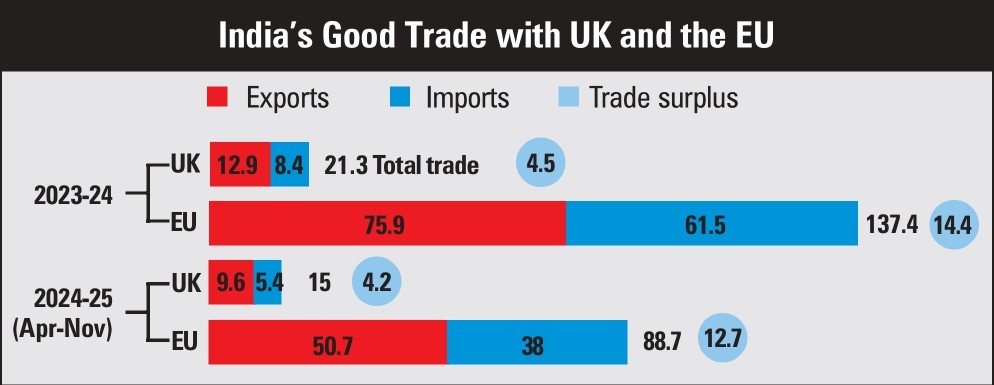
The EU Chief strongly believes the India – Pacific is vital to Europe and is one of its largest export destinations. Beyond trade, she says that Europe has a shared stake in security and in upholding the rules – based international order. That is it the core of Europe’s engagement with the India Pacific.
The latest commerce ministry data shows that India’s textile exports to Europe in April – October 2024 were up 6.39 percent to dollar 5.66 bn from dollar 5.32 bn in the same period of 2023. Even if Indian textiles are becoming more popular in several European countries the figures still are far short of the dollar 5.84 bn recorded in 2022-23. Ready – made garments contributed dollar 3.18 bn leading to a jump. Exports of cotton yarn, textiles made-ups and handloom totaled dollar 1.10 bn.

During the first seven months of 2024-25 German, Italy, Sweden, Finland, Switzerland, the UK Czech Republic, Poland had a high demand for textiles. Austria, Greece and Slovenia saw fresh growth in 2023-24. Sweden, the Czech Republic, Bulgaria, Switzerland, Finland, the Netherlands and Ireland remained important markets.
India brand Equity Foundation (IBEF) a division of the commerce ministry, projects Indian textiles and apparel market to touch dollar 350 bn by growing 2030 at 10 percent compounded aggregate growth rate (CGAR). India is also among the top five global exporters in a number of textile categories and is third largest exporter of clothing and textiles worldwide. By 2030, exports are predicted to surpass dollar 100bn. The textiles and clothing sector accounts for 12 percent of exports, 13 percent of industrial production and 2.3 percent GDP.


